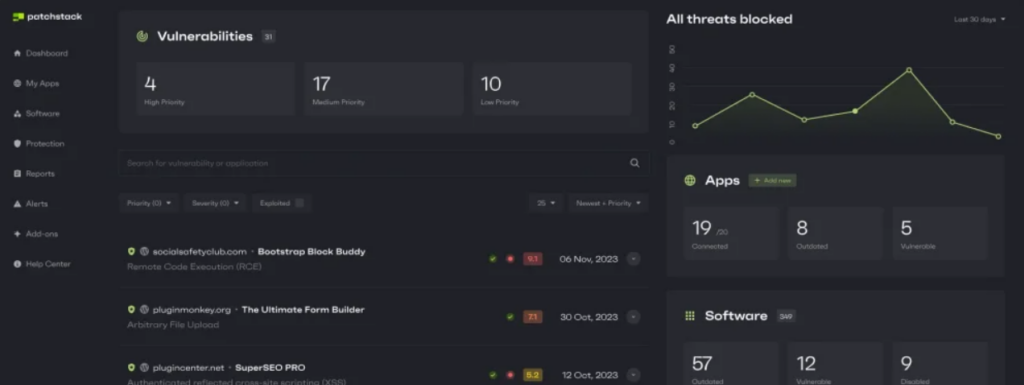WordPress powers over 40% of websites on the internet, making it a prime target for cyber threats.
Vulnerability monitoring is the proactive process of continuously scanning and identifying security weaknesses in WordPress core, themes, and plugins.
This ensures that vulnerabilities are patched before they can be exploited by malicious actors.
Why Is Vulnerability Monitoring Important?
Hackers frequently exploit security flaws in outdated WordPress plugins and themes. A single vulnerability can lead to a range of cyber threats, including:
- Website defacement – Attackers replace your website content with malicious messages.
- Data breaches – Sensitive user data, including passwords and payment details, can be stolen.
- Malware injection – Hackers insert malicious scripts that redirect visitors or spread malware.
- SEO spam attacks – Malicious links are injected into your site, damaging your SEO rankings.
- Website downtime – Attacks can result in loss of service, which negatively impacts user experience and revenue.
WordPress Vulnerability Statistics
To understand the scale of security threats in WordPress, consider these statistics:
- A 2023 study by Patchstack found that 97% of all WordPress vulnerabilities were related to plugins.
- Similarly, according to WP Scan 99% of vulnerabilities are due to vulnerable themes or plugins.
- On average, 30,000 websites are hacked every day, with WordPress sites being a significant portion.
- 39.1% of hacked WordPress sites were running outdated versions of the software at the time of the breach.
These numbers highlight the importance of continuous vulnerability monitoring to maintain a secure website.
How Does WordPress Vulnerability Monitoring Work?
Vulnerability monitoring involves multiple layers of security checks to keep your WordPress website safe. This includes:
- Automated Scanning – Security tools scan your website to detect vulnerabilities in WordPress core, plugins, and themes.
- Threat Intelligence – Using global security databases, known exploits are identified and patched before they cause harm.
- Patch Management – If a vulnerability is detected, updates are applied as soon as they become available.
- Virtual Patching – When an official patch is not yet released, virtual security patches help mitigate the risk.
- Firewall Protection – Firewalls block malicious traffic attempting to exploit known vulnerabilities.

RelyWP’s Vulnerability Monitoring Services
At RelyWP, we prioritize security by including robust vulnerability monitoring in our WordPress care plans.
We frequently monitor your website to check for newly discovered vulnerabilities in the plugins or themes you have installed. If we detect a risk, we update the affected plugin or theme immediately – well ahead of our normal update schedule. Additionally, our security firewalls automatically block and patch most vulnerabilities, providing an extra layer of protection.
Stay Ahead of WordPress Security Threats
Regular vulnerability monitoring is a critical component of WordPress website security. Without proactive monitoring, your website is at risk of being compromised, leading to financial losses, reputational damage, and legal issues.
With RelyWP’s WordPress care plans, you can rest assured that your website is always protected against emerging threats. Our team stays on top of security updates, ensuring vulnerabilities are addressed before they become a problem.
Learn more about our care plans and secure your website today!